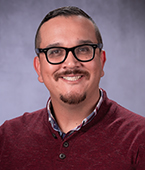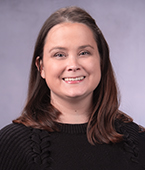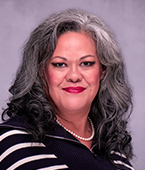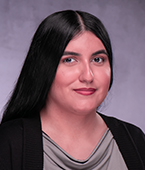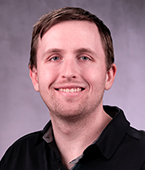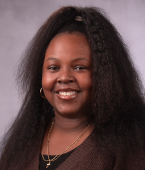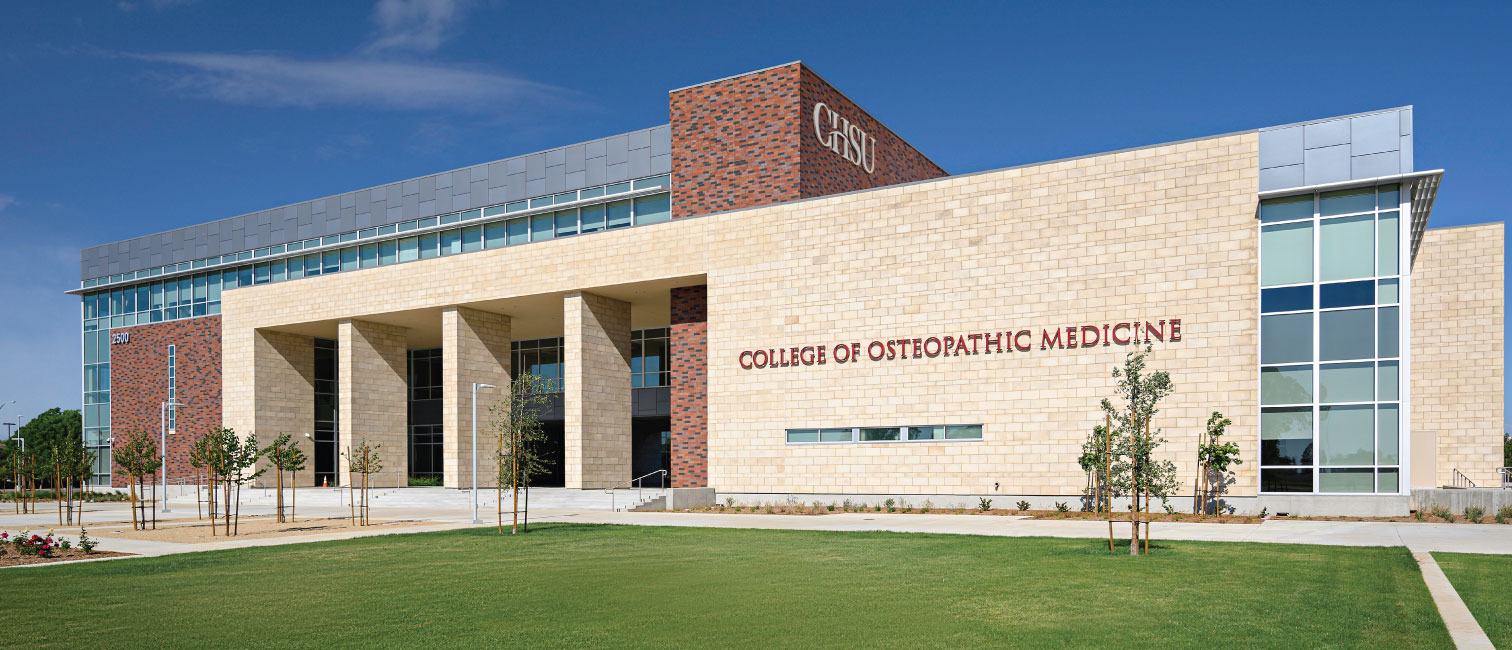
CHSU College of Osteopathic Medicine
Community CLINICAL Education
On This Page
Office of Community Clinical Education
10 Reasons to Become a Clinical Faculty/Preceptor
Becoming a Clinical Faculty/Preceptor
Becoming a Rotation Site
Clinical Faculty/Preceptor Interest Form
Current Clerkship Rotation Sites
Clerkship Policy and Procedures Manual
Student Exposure to Infectious Diseases and Environmental Hazards
Clinical Faculty/Preceptor Training Videos
Library Resources & Services for Clinical Faculty/Preceptors
Glossary
Office of community clinical education
Welcome to the Office of Community Clinical Education!
Community clinical education team

Jonathan Terry, DO, QME, DABPN, ABIHM
Assistant Dean of Community Clinical Education
Associate Professor, Specialty Medicine
559-712-4200
jterry@chsu.edu
10 REASONS TO BECOME A Clinical FAculty/PRECEPTOR
- Increases patient satisfaction – Your patients enjoy the “extra time” a student listens to their concerns
- Inherent desire to give back – It’s personally fulfilling to contribute to the future of medicine
- Keeps you current – Students will ask the darnedest things, such as “why do we order that test anyway?”
- Students and things and do tasks – They can look up lab values, review imaging, and do literature searches, e.g. scut
- Students can do “pre-rounds” on inpatients – They enhance data collection, facilitate nursing interactions etc.
- Potential recruitment of future physicians for your medical staff or residency programs – Students develop a loyalty to the institution and to the physician group
- There is prestige in being a teacher of future physicians – “Your Doctor Is Also a Teacher” is a nice sign to hang in the waiting room
- University Access
• University Academic Faculty appointment
• Access to on-line library database and textbooks
• Access to state of the art SIM lab, holographic anatomy, etc
• University provides faculty development programs (especially to newer faculty)
• Large 200 and 250 classrooms and outdoor courtyard (500 people) for events - CME hours awarded/eligible for teaching
- Monthly remuneration – Paid directly to physician preceptor or group, on a per student/per month calculation
Becoming a Clinical Faculty/preceptor
YOUR ROLE AS A Clinical Faculty PRECEPTOR
Physicians that serve as Clinical Faculty/Preceptors support third- and fourth-year clinical training. By agreeing to supervise and mentor medical students, Clinical Faculty/Preceptors are shaping the next generation of providers. It is through a combination of office-based and hospital experiences that most of our students realize the “essence” of becoming a physician in the 21st century. As such, they are heavily influenced by the passion, empathy and fortitude of their Clinical Faculty/Preceptors. Clinical Faculty/Preceptors are mentors – a role which requires specific skills and functions. The following areas are provided to help clarify your roles as a CHSU-COM Clinical Faculty/Preceptor and/or adjunct faculty member.
Clinical FAculty/PRECEPTOR DUTIES
- Set expectations for students early in their rotation.
- Provide ongoing feedback throughout the rotation.
- Fill out evaluations and discuss them with students on the last day of their rotation.
- Always be an exemplary and positive role-model (teach them about your specialty and the profession in and out of the office).
- To optimize the teaching/learning encounter with a CHSU-COM medical student, Clinical Faculty/Preceptors are asked to carry-out the following functions:
- Orient student to the rotation and training site. Clearly identify specific service and personal expectations.
- Encourage office/ancillary care staff to be helpful and make student feel a part of the team.
- Complete a formal written evaluation of the student’s performance during the rotation and give formative feedback midway through rotation.
- Contact the Assistant Dean to discuss issues of concern and poor student performance.
TEACHING DUTIES
- Serve as a mentor (experienced and prudent advisor) who assists the student in applying knowledge and building skills to problem-solve patient care.
- Provide a variety of patient cases and adequate patient volume.
- Challenge the student with deliberate and thoughtful questions.
- Allow the student to participate in patient management to a degree appropriate for the level of training.
- Provide written and verbal feedback to the student in a constructive and timely manner.
- Be available, on site, for assistance during all patient care activities.
- Share learning resources (texts, computers and educational programs if available) sufficient to increase student knowledge and productivity.
- Assign readings, literature searches, or medical information gathering pertinent to patient cases.
HELPFUL RESOURCES
- A Student In Your Doctors Office – Calgary Herald
- How Can Medical Students Add Value? – Academic Medicine, Journal of the Association of American Medical Colleges
For Clinical Faculty/Preceptors who are DOs, integrate Osteopathic Manipulative Medicine into the rotation experience. As such, encourage the use of hands-on OMT as appropriate for the level of training. If you are unclear about the scope of these duties, or would like additional materials to develop your teaching/mentoring skills, contact your Assistant Dean.

INTERESTED IN BECOMING A Clinical FAculty/PRECEPTOR?
Becoming a ROTATION SITE
Assessment process
The purpose of this process is to ensure medical students have a rigorous clinical educational experience that meets the core educational learning objectives of the university and is comparable across all core educational sites, regardless of where students rotate. CHSU-COM has a rigorous and iterative process for assessment of its physician role experiences, clinical education experiences and outcomes.
There are four elements integral to this process and include:
1. Curricular requirements:
- Clearly defined clinical conditions that students should see, as defined by the faculty via the clinical education subcommittee of the curriculum committee.
- Clerkships with the same syllabi and learning objectives, regardless of site.
- Consistent university global learning objectives throughout the clerkship syllabi.
- Opportunities for utilization of osteopathic principles and practice which are available.
2. Standardized learner assessments and grading processes across site:
- Guidelines for grading defined by the clinical education subcommittee of the curriculum committee.
- A standardized EPA-based evaluation form across all clerkships.
- Electronic tracking of patients and conditions seen on rotation.
- A mid-clerkship feedback communication to identify progress toward curricular requirements with a plan for addressing gaps.
- Available electronic cases/OSCEs as a back-up plan for selected conditions or procedures not encountered on rotation.
3. Monthly analysis of outcomes
- Reviewed by clinical education staff.
- Annual clerkship analysis of outcomes cumulatively and across sites by the associate dean of clinical affairs.
- Presentation of data to the curriculum committee and the university’s institutional effectiveness department.
4. Infrastructure
- Data collection and monitoring, including the student information system and learning management system.
The process involves clear communication of the expectations and required elements between the Community Clinical Education department and the site Clinical Faculty/Preceptors. Communication will occur at the initial orientation meeting, semi-annually as Clinical Faculty/Preceptor evaluation reports are provided to Clinical Faculty/Preceptors, and annually as the clerkship director shares annual clerkship academic report data with Clinical Faculty/Preceptors.
Monthly clerkship review is conducted by the Community Clinical Education staff, with immediate action taken if necessary. Annual clerkship analysis cumulatively and across sites occurs by the Associate Dean of Community Clinical Education with an annual report presented to the curriculum committee. Feedback and recommendations from the curriculum committee are relayed to the Associate Dean and Clinical Education subcommittee to implement recommended clerkship modifications.
The clerkship review process is repeated annually, with data, findings, trends, and recommendations discussed at the annual clinical education retreat. The retreat provides a forum for safe yet public discussion of critical areas that need improvement, discussing successful practices from other clerkships or sites for possible reproduction.
CURRENT CLERKSHIP ROTATION SITES
| Title | Category | Address | Link |
|---|
Clerkship Policy and Procedures Manual
Clinical Faculty/Preceptors and rotation sites receive the following manual prior to starting their clerkship rotations and agree to abide by all terms and conditions specified in the manual below.
Students receive the following manual prior to starting their clerkship rotations and agree to abide by all terms and conditions specified in the manual below.
Student exposure to infectious disease and environmental hazards
PROCEDURES
If a student experiences an exposure incident while participating in clinical experiences and/or clinical laboratory activities, it is to be handled as an emergency. The student is required to:
- Immediately cleanse the wound with soap and water or if contact in the eye(s) or mucus membranes flush with water for several minutes.
- Contact the appropriate CHSU personnel immediately:
- If Year 1 or 2, report the exposure incident to the:
- Office of Student Affairs
- Instructor of Record
- If Year 3 or 4, report the exposure incident to the:
- Office of Student Affairs
- Instructor of Record
- Associate Dean of Community Clinical Education/Experiential Education Director
- Clinical Faculty/Preceptor
- If Year 1 or 2, report the exposure incident to the:
- Follow CDC Post-Exposure Prophylaxis (PEP) Guidelines
- Proceed to the nearest emergency department for immediate evaluation and treatment as needed.
- Within 24 hours, complete and submit an Exposure form to the Office of Student Affairs. The form may be submitted electronically.
Clinical FAculty/Preceptor Training Videos
CHSU Title IX, Equity, and Diversity Training Video
CHSU FERPA Training Video
Please access Panopto video player using your CHSU credentials.
CHSU Preceptor 101: Preceptor Evaluation of Students
CHSU Preceptor 101: Student Evaluation of Preceptor
CHSU Preceptor 101: Tips for a Great First Day-Rotation Orientation
CHSU Preceptor 101: Student Telepsychiatry Interview Workflow Demo
library resources & Services for Clinical faculty/preceptors
As a valued member of the CHSU community, the CHSU Health Sciences Library is pleased to provide you with a variety of resources and services. Our Preceptor Orientation to the Health Sciences Library guide includes:
- How to access resources like ebooks, ejournals, study tools, procedural videos, drug monographs, and clinical cases.
- Ways to search databases and collections using our search tools.
- Information on the range of services the library offers, such as interlibrary loan and research support.
- A list of popular collections and tools.
- Frequently asked questions (FAQ).
Glossary of terms
| Term | Definition |
|---|---|
| AACOM | American Association of Colleges of Osteopathic Medicine |
| ACGME | Accreditation Council for Graduate Medical Education |
| ACLS | American Heart Association’s Advanced Cardiac Life Support |
| AHA | American Heart Association |
| AOA | American Osteopathic Association |
| ARC | American Red Cross |
| BLS | American Heart Association’s Basic Life Support (Healthcare Provider) |
| CHEA | Council for Higher Education Accreditation |
| CHMG | Community Hospitalist Medical Group |
| CHMG Hospitalist | Contracted Internal Medicine Preceptor (DR) |
| CHS | Community Health Systems |
| CHSU | California Health Sciences University |
| Clerkship | Clinical clerkships encompass a period of medical education in which medical students train in a teaching hospital |
| CMC | Community Medical Centers (now Community Health Systems) |
| COCA | Commission on Osteopathic College Accreditation |
| COM | College of Osteopathic Medicine |
| COMAT | Distinctive subject examinations designed to assess core osteopathic medical knowledge. currently tests on eight core clinical disciplines: Emergency Medicine, Family Medicine, Internal Medicine, OB/GYN, Osteopathic Principles and Practice, Pediatrics, Psychiatry, and Surgery. 2.5-hour exam consisting of 125 questions |
| COMLEX Level 2 CE | COMLEX-USA Level 2-Cognitive Evaluation (CE) is a problem-based and symptoms-based assessment related to clinical care. Broken up into two 4-hour sessions in the same day. 400 questions, the exam covers a wide array of topics including: emergency medicine, family medicine, internal medicine, obstetrics/gynecology, osteopathic principles and neuromusculoskeletal medicine, pediatrics, psychiatry, surgery, and other relevant areas |
| CORE ELMS | Experiential Learning Management System |
| CRMC | Community Regional Medical Center |
| DO or D.O. | Doctor of Osteopathic Medicine |
| Direct Supervision of a Medical Student | Direct supervision of a medical student by a licensed provider who is available in the facility at the time the student is providing care to any patient. For a procedure, the licensed provider must be credentialed to perform the procedure and in the room with the student throughout. |
| Education Days | Third-year osteopathic medical students will be presented with didactic and small group discussion content covering clinical content, topics of the community health center movement, health systems science, and the Central Valley. The students will be presenting patient case presentations and facilitating journal clubs. |
| EMR | Electronic medical records |
| FBU | Fresno Barrios Unidos |
| FQHC | Federally Qualified Health Center · Omni · Golden Valley |
| GME | Graduate Medical Education |
| GVH | Golden Valley Hospital |
| Hospitalist | CRMC contracted preceptors |
| ID/DL | Identification/Driver’s License |
| ILP | Individualized Learning Plan |
| IPE | Interprofessional Education |
| LIGS | Letters in Good Standing- A letter of good standing is used to verify the character and academic status of a student |
| M.D. | Medical Doctor |
| MCH | Madera Community Hospital |
| NACIQI | National Advisory Committee on Institutional Quality and Integrity |
| NBOME | National Board of Osteopathic Medicine Examiners |
| NP | Nurse Practitioner |
| OCC | Osteopathic Core Competencies |
| OMM | “Osteopathic Manipulative Medicine – Third-year osteopathic medical students will be provided the opportunity to complete training in osteopathic manipulation medicine; OMM day is held the last day of clerkship following COMAT exams.” |
| OMS-l, ll, lll, lV | Osteopathic Medical Student in academic year 1, 2, 3, or 4 |
| OPP | Osteopathic Principles and Practice |
| PALS | American Heart Association’s Pediatric Advanced Life Support |
| PGY-1 | Post Graduate Year One; residency or intern rotations |
| Preceptor | The preceptor guides the student’s clinical learning experience, facilitates student autonomy, and acts as a role model. |
| PRHS I, II, III, IV | Physician Role in Health Science Courses 1, 2, 3, 4 |
| QuantiFERON Gold test | (QFT) is a simple blood test that aids in the detection of Mycobacterium tuberculosis, the bacteria which causes tuberculosis (TB) |
| SLO | Service-Learning Opportunity |
| Student Credentialing | Verification documents required for clinical rotation |
| SUB-I | Sub-internship · 2022 Visiting students · Three residency rotations (in hospital)” |
| Title IV | Title IV of the Higher Education Act |
| USDE | United States Department of Education and the Secretary of Education |
| VSAS | Visiting Students Application System |
| VSLO | Visiting Students Learning Opportunities |
| WILP | Wellness Individualized Learning Plan |
| WSCUC | WASC Senior College and University Commission |


